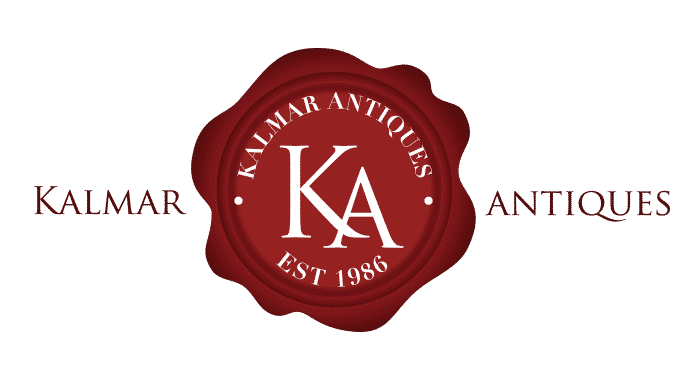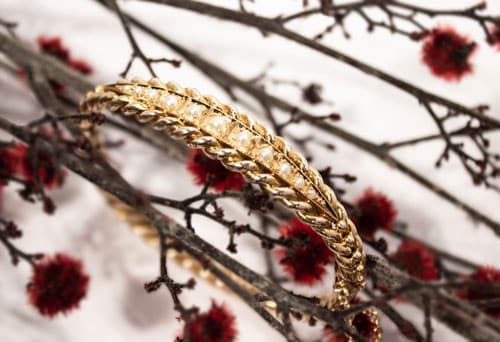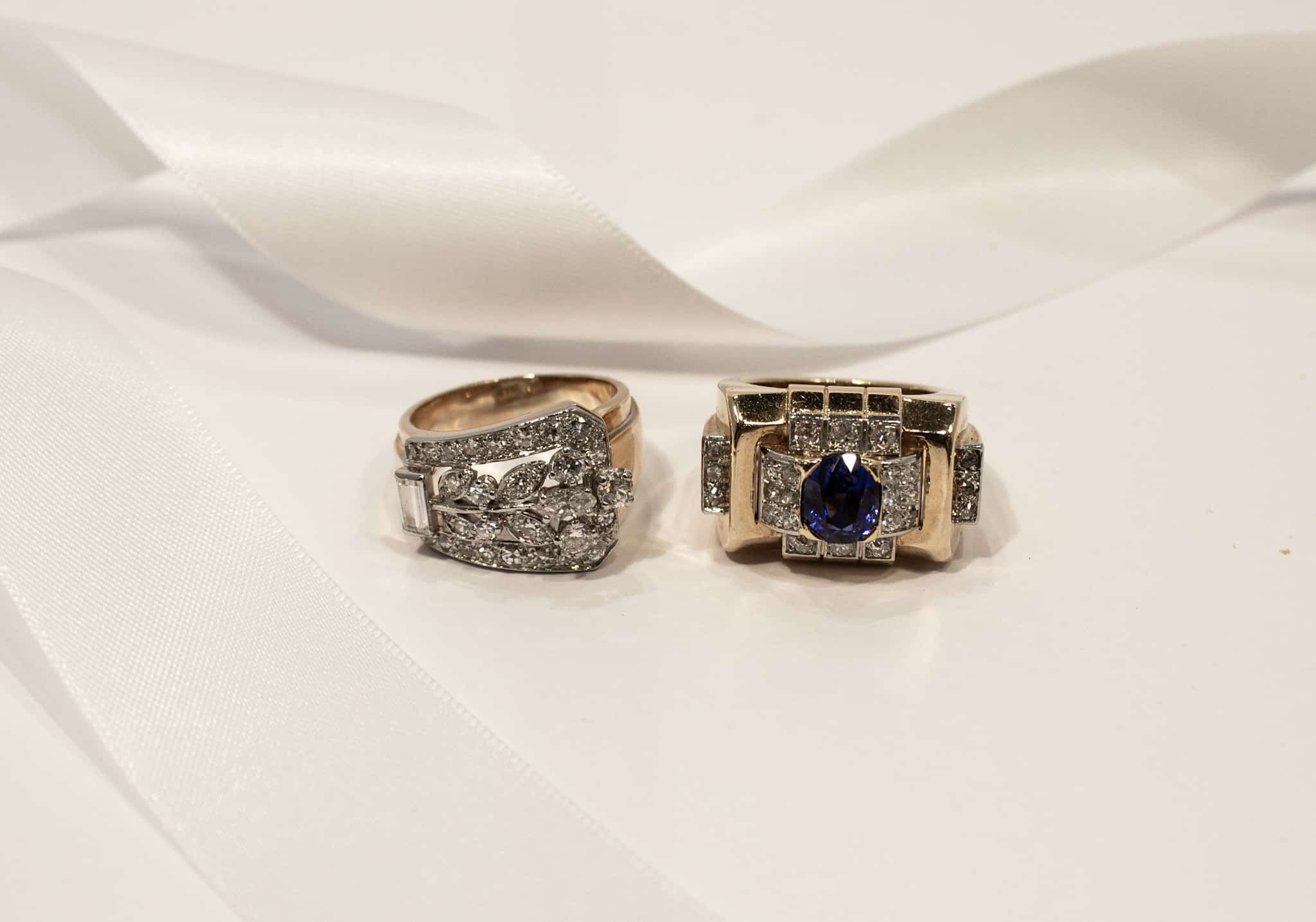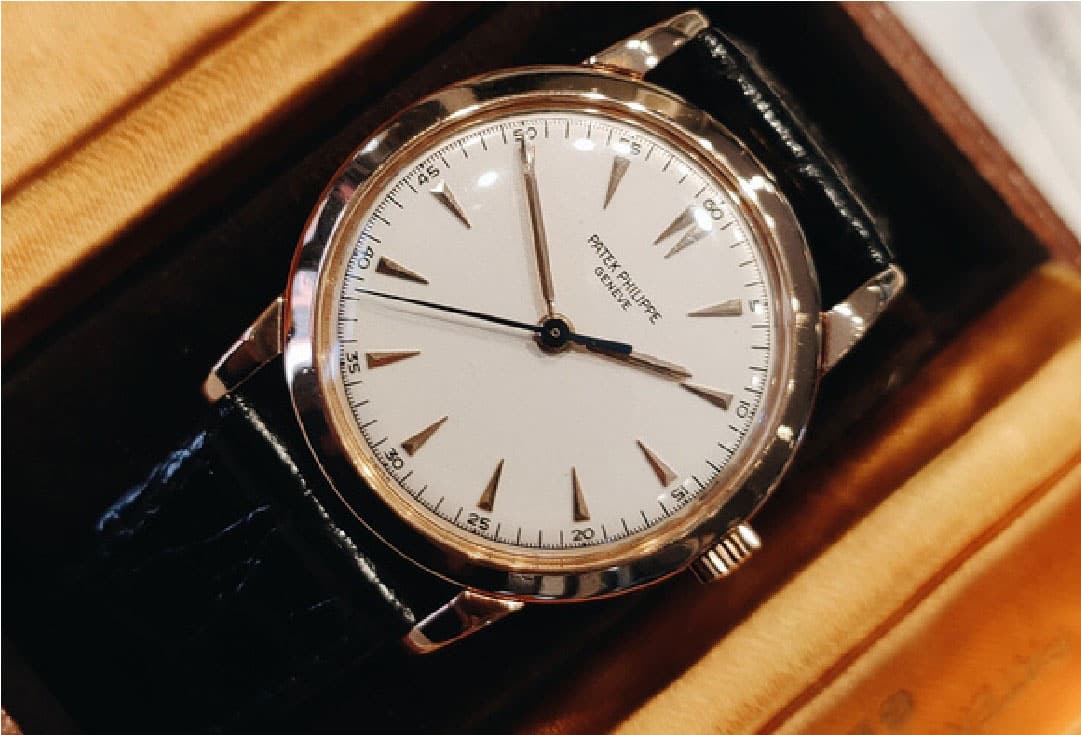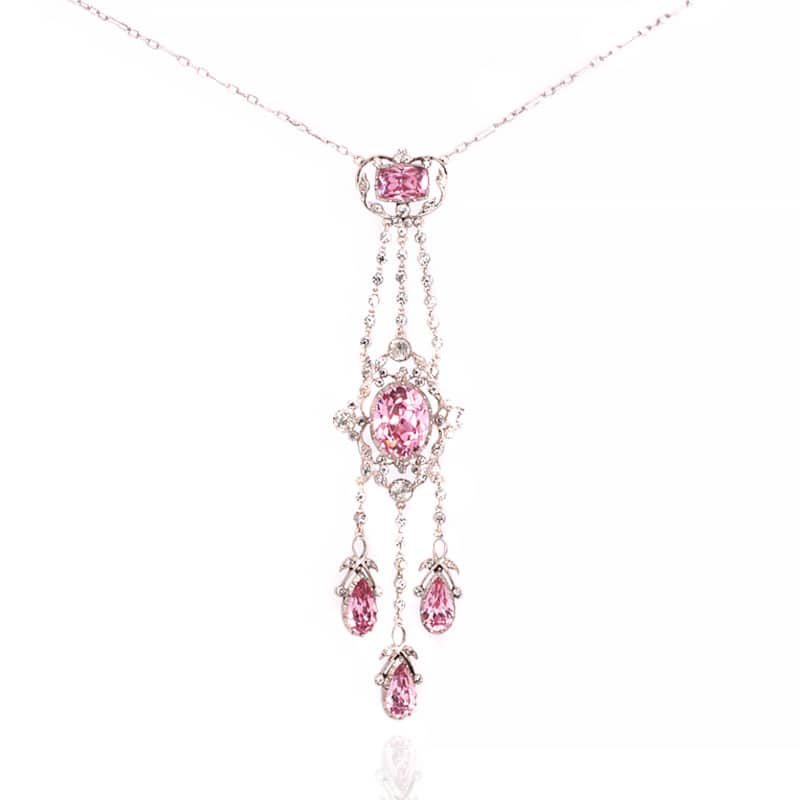
Paste jewellery offers us incredible insight into the opulence of the Georgian era. Diamonds had dominated the fashions of the aristocratic classes, with their ability to sparkle brilliantly by candlelight. The taste for Rococo style meant that the larger and more elaborate jewellery designs were sought after to dazzle audiences at the many festivities and balls. Luxuries were reserved for the elite classes and extravagant jewels were unattainable to the lower classes of feudal Britain and France. However, such ostentatious displays of wealth led to many opportunistic crimes committed in desperation by the lower-class citizens. Highway robberies became a common and dangerous occurrence for the elite aristocrats who often travelled by carriage at night between festivities.
The Invention of Paste Jewellery
The invention of paste gemstones answered the needs of the emerging middle classes of Europe and of the aristocratic partygoers of high society. Paste is a term given to imitation gemstones that are made from glass. The production of glass stones had been underway in Venice for many centuries, however, these glass imitations were molded and lacked the sparkle of real gemstones (5.1). It wasn't until 1675 that English glassmaker, George Ravenscroft, developed a version of flint glass that contained a high lead content. This version had high dispersion and a higher refractive index than molded glass or rock crystal and was hard enough to withstand faceting and polishing (5.2). This version was met with widespread popularity across England and thrived for the next 200 years.
Parisian jeweller, George Frederic Strass, continued to pioneer the invention of paste jewellery and in the 1720's he created a superior material that would become synonymous with the trade of paste jewellery. "His shop on the Quai des Orfevres was the most famous paste jewellers, with pieces designed in the latest fashions and set in silver with as much care as if they were diamonds" (3.2). Strass's version was polished with metal powder to create a higher brilliance to the stones, making them a convincing imitation to diamonds, particularly when worn in the nighttime in the flickering candlelight. The popularity of Strass's version of paste jewellery become so significant that he was appointed jeweller to the French Crown. This recognition led to paste jewellery in France being referred to as strass jewellery.
Rhinestone Jewellery
Another popular substitute of the time were rhinestones. In modern times, we associate rhinestones as a part of costume jewellery, however, rhinestones in their truest form refers to rock crystal of a specific geographical origin. Rock crystal from the Rhine (Rhein) River in Germany were cut, faceted and polished to create a colourless gemstone substitute for diamond. The term rhinestone is indicative of this geographical origin, however, throughout history the term was widely applied to rock crystal from other locations and then later to glass or even plastic versions.
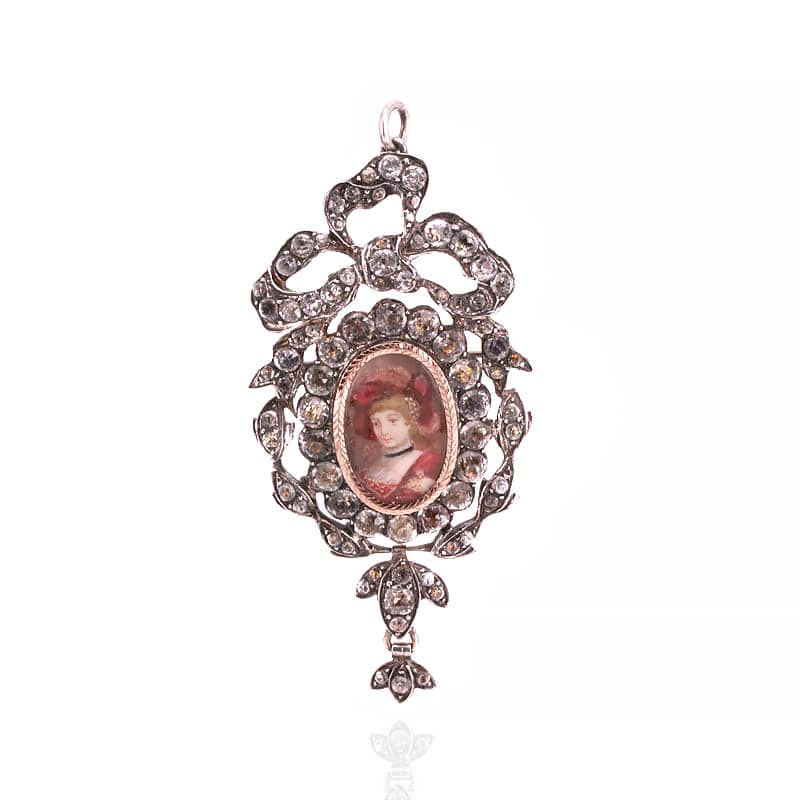
This Georgian era portrait miniature brooch and pendant is crafted in silver with rhinestones set into the border. The woman in the portrait is portrayed in Regency era garb with a black choker ribbon and feather headdress. The ribbon motif at the top of the pendant was also common during Georgian era jewellery.
Georgian era paste jewellery allowed for the developing middle class to participate in the opulent fashions of the time but at a price point which they could afford to pay. For the elite classes, they were able to have jewellery pieces made to keep up with current fashions, without having to remodel their family jewels. A trend also developed to have expensive jewellery pieces recreated using paste stones. This was implemented by the elite classes and even the royal families, as it allowed them to wear their jewellery to events without the fear of having them stolen by highway robbers.
Paste jewellery is now highly collectable as they serve as rare examples of designs from the Georgian era. These are sort after as many jewels from this era were remodelled or destroyed to compete with changing fashions.
These items are currently on display at Kalmar Antiques.
Sources:
Navette Jewellery (29th May 2017) 'History of imitation gemstones: glass and paste', History of Imitation Gemstones – Paste and glass gemstones – navette jewellery
Phillips, Clare (2019) 'Jewels & jewellery'; Thames & Hudson V&A
